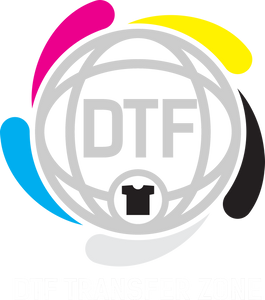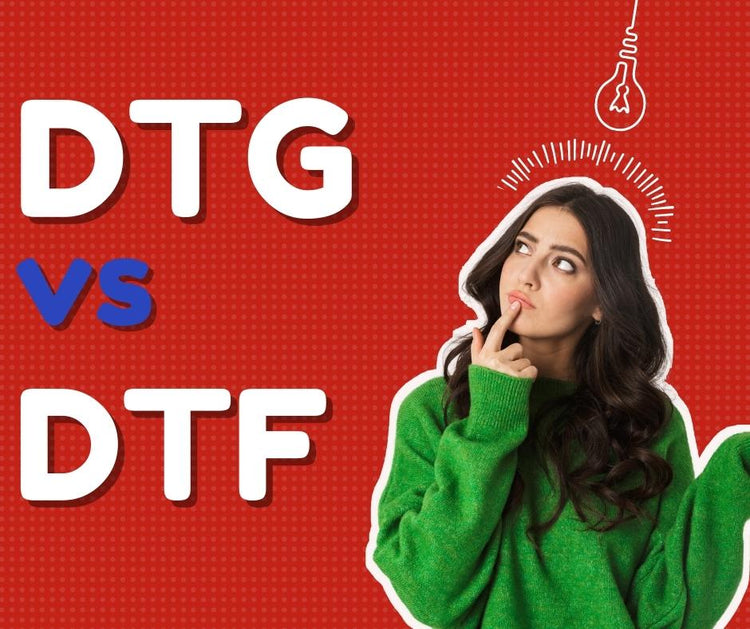DIRECT TO GARMENT (DTG) PRINTING
VS
DIRECT TO FILM (DTF) PRINTING
Advances in all areas of technology have definitely impacted the options that
printing businesses have today, especially custom printing. No matter the size of
your business, there are two major recent options to consider, DTG and DTF, when
you are searching for the right equipment. Both are operated with reliable
computer programs, are relatively easy to learn, are fast, and both produce high-
quality outcomes. So let’s survey these options and examine their positive and
somewhat less-than positive qualities.
DTG Pros
As the name indicates, the desired image is printed directly to the selected medium,
such as a T-shirt, hoodie, or apron. There is only one crucial step to be done first,
pre-treating the garment, before the transfer to the medium can be completed.
Fewer steps save time and money. DTG can print irregular and large designs and
DTG products have smooth finishes that are durable, because the design is bonded
to the fabric in its process. All of these qualities support production in bulk. The
average material cost per DTG-printed item ranges from $5-7 and retail sales per
average T-shirt is between $25-30.
DTG Cons
As mentioned above, before the image can be transferred to the selected medium, a
special pre-treatment solution must be sprayed on the garment; this step is required
and must not be omitted. Thus, adequate supplies of this solution must be included
when the business owner is stocking up on supplies. One option to be considered
is the purchase of pre-treated garments but the cost of solution vs. that of pre-
treated garments would need to be studied. Another important “con” is that DTG
printing can only be done on flat items.
DTF Pros
As the name suggests, this process involves printing to a specialized film;
therefore, no pre-treatment of the selected medium is required. Once the desired
image is printed on the specialized film, it is ready to be transferred to the desired
medium using a heat press. This allows the business to stock up on printed designs
that can easily be stored for later use as orders are received. This is definitely a
time saving/customer-friendly advantage. In addition, the DTF process is more
versatile because images printed on the specialized film can be transferred to a
variety of objects, such as mugs, plates, cutting boards, and caps, allowing the
business owner to expand the business to include custom-printed items besides
fabrics. Images produced by the DTF process are vivid and durable. The average
material cost per DTF-printed item is in line with DTG printing, if not slightly less.
DTF Cons
The DTF process requires more materials: specialized film and adhesive powder,
which is the transfer agent. There is more waste with this process because neither
the film nor the powder can be reused. In addition, the DTF process requires more
labor than DTG because of the necessary multiple steps. DTF printers often have a slow print speed, especially converted desktop DTF printers. If you are able to
purchase a larger commercial DTF printer, you will see increases in print speed. It
is not uncommon to see print shops with multiple large format DTF printers to
keep up with customer demand.

